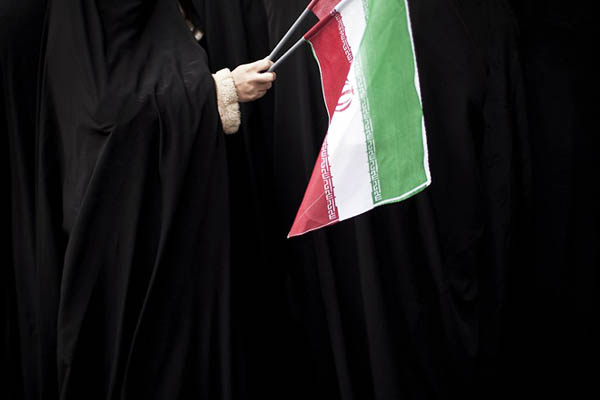
Behrouz Mehri—AFP
Analysts say Trump’s decision to withdraw all troops is ‘strategic victory’ for Tehran
President Donald Trump’s decision to withdraw U.S. troops from Syria risks shattering a cornerstone of Washington’s Middle East policy by allowing Iran to consolidate a “land bridge” to the Mediterranean.
The much-bandied about scenario that sees Iran redrawing the regional map by entrenching a land corridor across Iraq, Syria and Lebanon is becoming a reality, analysts say.
Critics of Trump’s decision argue that for all his fiercely anti-Iranian stance, he has just gifted Tehran a decades-old strategic goal.
Trump made the shock announcement on Wednesday, saying that the troop deployment in Syria was no longer needed because the Islamic State (I.S.) group had been defeated. Many in his own camp challenged that assessment and warned that such a move would abandon the ground to the United States’ main regional foe. The top Republican and Democrat on the House Armed Services Committee even issued a rare joint statement warning against “a strategic error” that would empower “malign actors such as Russia and Iran.”
Iran has thousands of regular forces deployed across Syria in support of the regime, as well as thousands of militiamen it supports from various countries.
“It is clearly a strategic victory for Tehran,” said Middle East analyst Julien Theron. “It will allow it to remove the Western buffer between Syria and Iraq.”
The United States currently has around 2,000 forces deployed in Syria in two areas along the Iraqi border that did not fully block Iranian movement but kept it in check. One is in support of Kurdish-led forces spearheading the ongoing battle against I.S. jihadists east of the Euphrates River in northeastern Syria. The other is further south at the Al-Tanaf desert base, where Damascus and its allies have repeatedly said U.S. troops had no reason to be.
U.S. troops in Iraq and in Syria keep some level of pressure on the “Iranian land bridge,” stretching from Iran to the Mediterranean.
Syria’s government, which has recently been reclaiming control over vast swathes of territory it lost when the war broke out in 2011, is aligned with Tehran.
The government in Iraq, a regional Sunni bastion until Saddam Hussein’s fall in 2003, is Shia-dominated and militia groups loyal to Iran play an important security role across much of the country. One of the reasons for the White House to oppose a “land bridge” is preventing Iran from expanding its military footprint, including to positions in Syria and Lebanon near the border with U.S. ally Israel.
“The White House should understand that a key element of its Iran policy is at stake here,” the Washington Institute said in a policy paper. “Namely, the effort to keep Tehran from entrenching itself in Syria, establishing a land bridge to Lebanon, and directly threatening Israel,” it said.
Significant chunks of Lebanon are controlled by Hezbollah, a Shia organization with very close ties to Iran and a powerful military branch. Hezbollah was created at Tehran’s initiative as an anti-Israeli proxy, a few years after the 1979 Islamic revolution in Iran.
Bassam Abu Abdallah, who heads the Damascus Center for Strategic Research and is close to the government of Syrian President Bashar al-Assad, said however that the impact of the U.S. withdrawal was being exaggerated.
U.S. national security adviser John Bolton had previously said that U.S. troops would remain in Syria as long as Iranian forces remained deployed there.
Abu Abdallah argued that, similarly, Iranian troops would be less needed once U.S. forces leave. “There is no doubt that this withdrawal will lead in the long term to a scaling down of the Iranian military presence,” he said. “But for now the conditions are not yet there for a easing of the military deployment,” he added.
Aaron Lund, an analyst at the Century Foundation, said however that it was too early to say who would fill the security vacuum left behind by the Americans. “I think we’ll have to wait and see what happens, how quickly and completely the United States withdraws and who fills the void,” he said. “It could get really messy,” Lund said.
